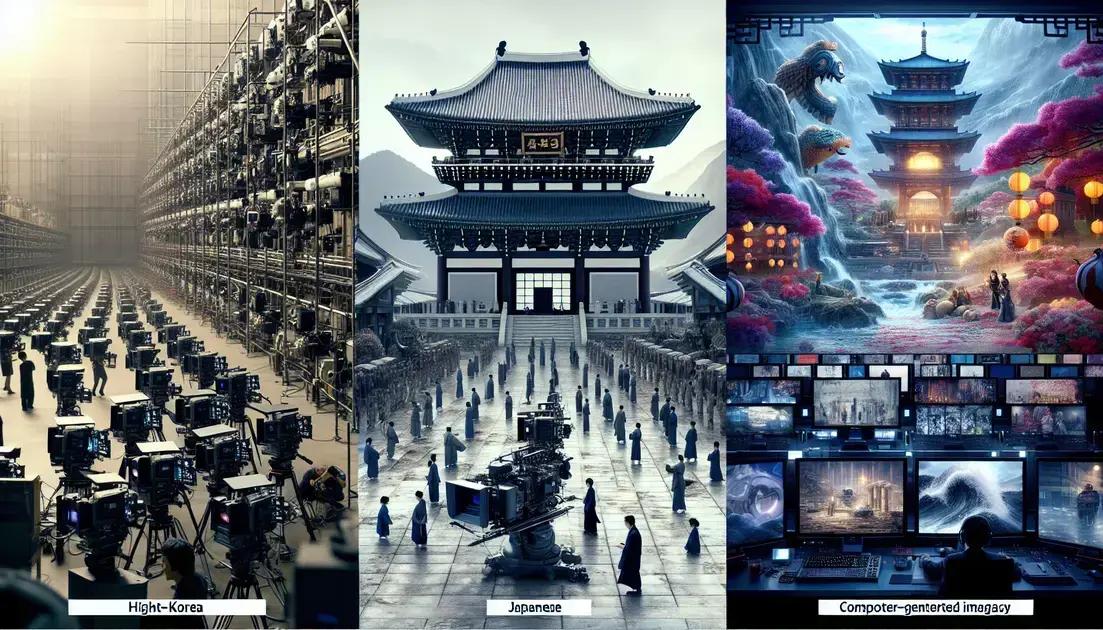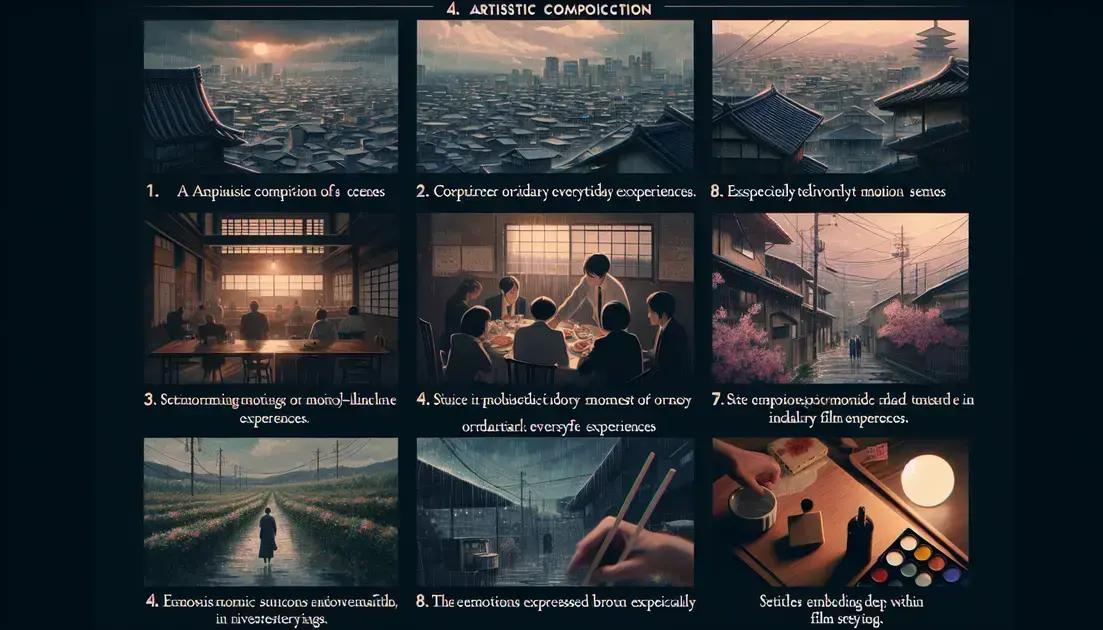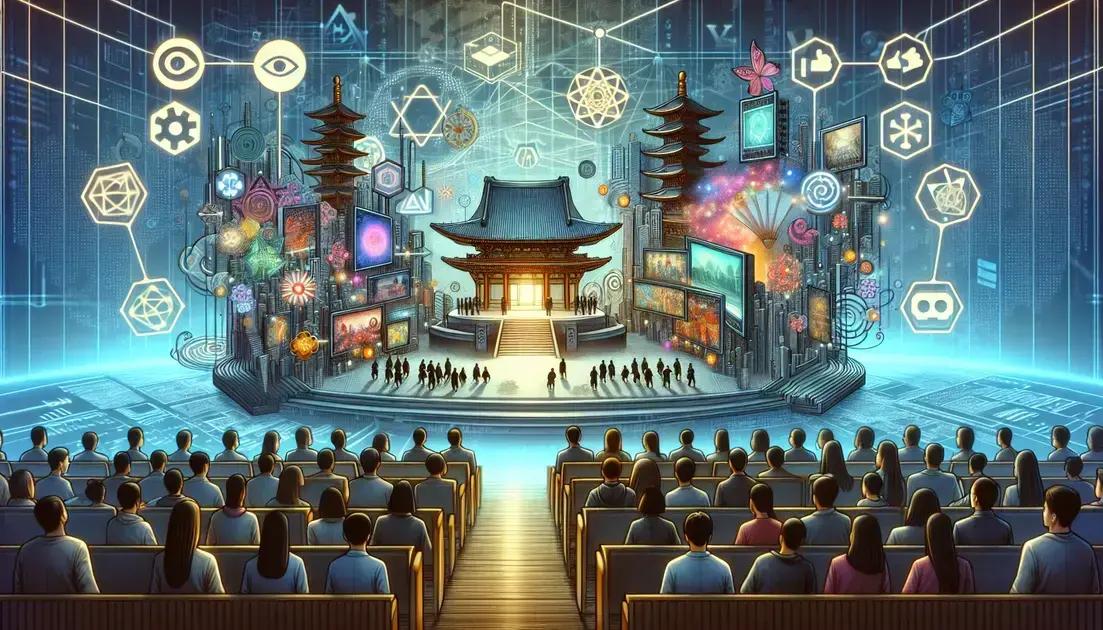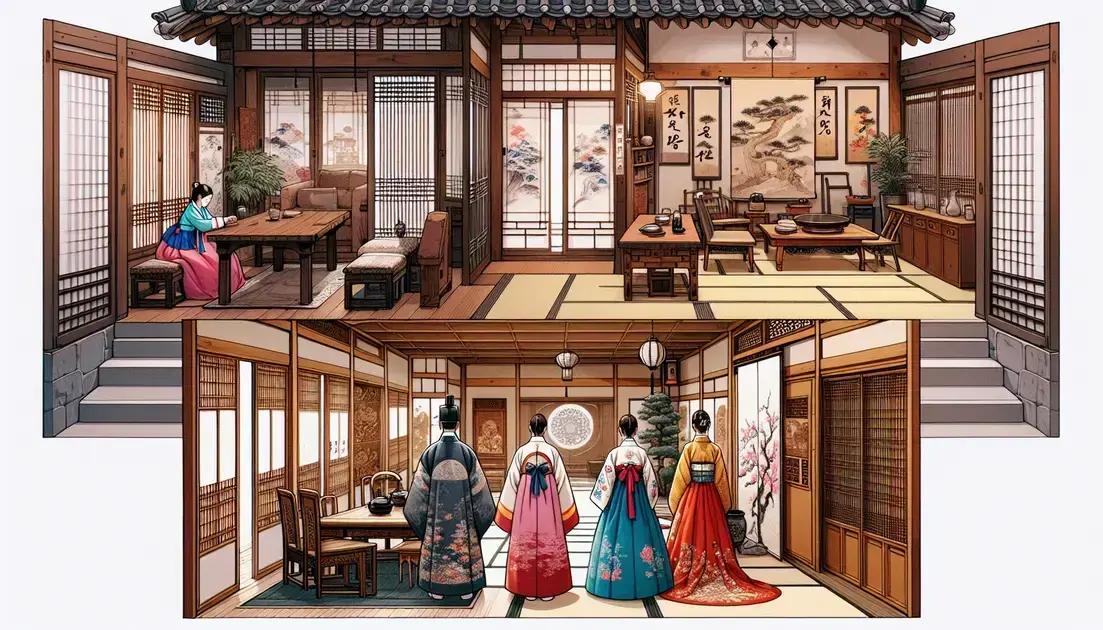Explore the Intriguing Production Differences in Korean, Japanese & Chinese Doramas
Anúncios
**Korean, Japanese, and Chinese doramas** have taken the world by storm, each offering unique storytelling techniques and cultural insights. In this article, we dive deep into the **distinctive production differences** of these captivating dramas. From historical developments to modern-day influences, discover how each country’s approach to creating doramas shapes its style and storytelling prowess. This exploration will guide you through the fascinating world of Asian drama. Read on to unveil the nuanced art of dorama production!
Historical Development of Doramas Across Asia
Asian doramas have a rich historical lineage that is deeply intertwined with the cultural contexts of Korea, Japan, and China. Each country has developed its unique narrative style from its historical roots. Korean dramas, or K-dramas, initially found inspiration from traditional storytelling such as pansori and classical literature, which can still be traced in their narrative structures today.
In Japan, the theatrical traditions of kabuki and noh have heavily influenced Japanese doramas. Initially aired on television to fill daily schedules, they gradually became a cultural staple, known for their diverse genres, from high school romances to suspense-filled mysteries.
Chinese doramas, also known as C-dramas, often reflect the grandeur and complexity of China’s rich history and diverse cultures. With roots in ancient Chinese opera and folklore, these dramas blend historic and modern elements and are recognized for their elaborate costumes and vibrant settings.
The Evolution of Asian Television
Throughout the decades, doramas have evolved in tandem with technological advances and societal changes. The rise of digital platforms has further expanded their reach, bringing these compelling stories to global audiences. This digital age has ignited an exchange of creative ideas that has seen the dorama production styles influence and innovate within each country.
The historical development of doramas across Asia is not only about entertainment but also a reflection of cultural identity and evolution, painting a picture of society’s values and challenges over time.
Key Differences in Production Techniques

The production techniques of Korean, Japanese, and Chinese doramas reveal stark differences rooted in each culture’s aesthetic and technological innovations. In Korea, K-dramas are known for their high-quality production values, often leveraging state-of-the-art cameras and editing software. The fast-paced shooting schedules are designed to keep up with live streaming demands, allowing for rapid viewer feedback.
Japanese doramas typically adhere to a more meticulous filming approach. Often shot well in advance, they prioritize strong narrative cohesion and character development. The focus is less on flashy effects and more on crafting subtle, emotion-driven scenes that resonate deeply with audiences.
Innovative Storytelling Structures
Chinese doramas often incorporate spectacular visual effects, capitalizing on the nation’s advanced CGI technologies. Their productions tend to have bigger budgets and longer shooting schedules, permitting detailed set designs and elaborate costumes. This results in visually stunning series that often blend historical elements with modern-day techniques.
All three countries utilize different strategies to engage their audience effectively. Korean doramas often introduce trendy visuals and music to create an immersive experience, while Japanese doramas rely on powerful storytelling and precise direction. Chinese doramas stand out with their grandiose settings and complex plots.
Cultural Influences in Korean Doramas
Korean doramas are a vibrant tapestry of contemporary and traditional values, heavily influenced by the country’s rich cultural heritage. Family is a recurring theme, often highlighting strong familial bonds and respect for elders. This focus mirrors the Confucian values deeply embedded in Korean society, where duty and harmony within family structures are paramount.
Education and success themes are another critical aspect of K-dramas, reflecting Korea’s highly competitive academic culture. Characters frequently navigate obstacles related to educational pressure, career ambition, and societal expectations, resonating with viewers who experience similar real-life challenges.
Traditional and Modern Fusion
The integration of Korean traditional customs with modern narratives in doramas is evident through the use of cultural elements like hanbok and traditional ceremonies. These aspects serve not only as narrative devices but also as a celebration of Korean heritage, providing audiences with a glimpse into the country’s customs and etiquette.
Moreover, K-dramas often tackle contemporary social issues such as mental health and gender roles, portraying evolving societal norms in Korea. This blend of traditional and modern cultural elements gives Korean doramas their unique appeal, juxtaposing historic charm with modern-day relevance.
Unique Storytelling Styles in Japanese Doramas

Japanese doramas are celebrated for their distinctive storytelling techniques, often weaving intricate narratives with emotional depth. These dramas typically focus on realistic character development, using subtle storytelling to explore complex human emotions and life situations. The attention to detail and nuanced portrayals allow for an immersive viewing experience.
Another hallmark of Japanese doramas is their incorporation of slice-of-life elements. This genre highlights everyday experiences, portraying ordinary characters facing relatable challenges, which resonates profoundly with audiences. Humor and poignant moments are skillfully blended to add layers to simple stories, creating narratives that are both entertaining and meaningful.
Artistic and Creative Narration
Japanese doramas often experiment with artistic storytelling techniques, like nonlinear narratives and unique plot devices. This creativity is evident in themes that blend fantasy with reality, leading to unexpected twists and turns that keep viewers engaged. Moreover, doramas frequently feature thoughtful reflections on society, addressing topics like isolation and self-discovery, which offer both introspection and entertainment.
Many Japanese doramas also feature cinematic visuals and soundtracks that enhance the storytelling. The use of music to set the tone and convey emotions adds an additional layer to the viewing experience, making the stories more vivid and memorable.
Budget and Quality in Chinese Doramas
Chinese doramas, known for their visually stunning productions, often come with substantial budgets that support high-quality outcomes. These resources enable detailed set designs, elaborate costumes, and cutting-edge CGI, creating an immersive experience for viewers. The financial investment is evident in the meticulous attention to each scene, where every visual element is crafted to perfection.
This generous budget allocation allows for epic storytelling that blends historical drama with modern flair. Large-scale productions often include grandiose settings and action sequences that require specialized crews and technology. The combination of these factors results in a notable enhancement of the viewing experience, attracting audiences worldwide.
High Standards and Audience Appeal
The emphasis on quality can also be seen in the casting of skilled actors and the use of experienced directors. These professionals bring the complex scripts to life, ensuring that each performance resonates with emotional depth and authenticity. Moreover, the integration of advanced technology not only supports storytelling but also rivals the quality seen in international films.
While the focus on budget and quality enhances Chinese doramas, it also positions them as strong contenders in the global entertainment industry. With visually appealing aesthetics and engaging narratives, they have managed to capture and hold the attention of a diverse audience base.
Future Trends in Asian Drama Production

The future of Asian drama production is promising, with evolving technologies and global influences shaping the next generation of storytelling. One significant trend is the integration of advanced technologies such as virtual reality (VR) and augmented reality (AR), offering viewers immersive experiences that transcend traditional formats. This technological shift allows for more interactive and engaging content.
International collaborations are also on the rise, as Asian drama producers team up with foreign studios to blend diverse storytelling techniques and reach broader audiences. These partnerships are expected to bring new genres and styles, enriching the cultural exchange and appeal of doramas globally.
Streaming Platforms and Global Reach
Streaming platforms continue to play a crucial role in the future of Asian dramas, providing a global stage for these productions. With the ability to reach global audiences instantly, there is a push towards creating content that resonates across different cultures, emphasizing universally relatable themes and high production value.
Another anticipated trend involves increased focus on socially relevant themes. Producers are exploring complex narratives that reflect societal issues, such as environmental challenges and diversity, which appeal to a more conscious audience. This awareness fosters not only entertainment but also conversation, elevating the impact of these dramas.
The Fascinating Evolution of Asian Doramas
In exploring the production differences in Korean, Japanese, and Chinese doramas, it’s clear that each country’s distinctive cultural and historical influences create a unique tapestry of storytelling. From the emotional depth and Confucian values in Korean doramas to the artistic and intricate narratives found in Japanese television, and the high-budget, visually stunning productions typical of Chinese drama, these shows have captivated global audiences.
The future looks bright as technological advancements and international collaborations promise to further innovate and expand the reach of Asian dramas. With new storytelling techniques and themes that reflect social consciousness, these dramas are poised to play a significant role on the world stage.
Embracing these trends could bridge cultural divides, promote understanding, and provide entertainment that resonates with audiences everywhere. The evolution of these doramas serves as a testament to their enduring appeal and the dynamic nature of Asian drama production.







